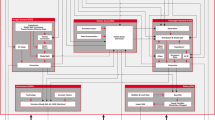Abstract
Evidence of the inability of transport models to elucidate policy is cited and reasons for this weakness are then suggested.
Attention is drawn to the fundamental changes in both opinion and policy currently taking place. There is less concern with accessibility per se and rather more concern with the provision of adequate or minimum accessibility for certain social groups. More emphasis is placed also on the environmental aspects of transportation.
The implications of these changes are outlined. It is not at all clear that the need to adapt and up-date models is appreciated widely enough. Finally, it is considered whether fundamental changes in methodology may help to make transport models more responsive to policy needs.
Similar content being viewed by others
References
Coburn, T. M., Beesley, M. E. and Reynolds, D. J. (1960), The London — Birmingham Motorway, Road Research Technical PaperNo. 46, London: HMSO.
Department of the Environment, (1974), “Environmental Evaluation: the Cost-Benefit Approach” (R. Travers Morgan & Partners), Urban Motorway Project Team Report, Technical PaperNo. 1. HMSO, London.
Dorling, N., Heyes, M., Jarvis, R., and Walpole, B. (1974), “Transport management for London,” Journal of Transport Economics and Policy, 8:2.
Downes, J. R., and Wroot, R. (1974), 1971 Repeat survey of travel in the Reading area, TRRL Supplementary Report 43UC, Crowthorne: Transport & Road Research Laboratory.
Foster, C. D. (1973), See House of Commons, (1973) Q. 1292-3.
Foster, C. D. and Beesley, M. E. (1963), “Estimating the social benefits of constructing an underground railway in London,” Journal of the Royal Statistical Society, Series A. Part 1.
Hall, P. G., Batty, M. J. and Starkie, D. N. M. (1974), The impact of fares-free public transport upon land use and activity patterns. Proceedings, Transport and Road Research Laboratory's Symposium on Public Transport Fare Structure, November 1973, TRRL Supplementary Report 37UC, Crowthorne: Transport & Road Research Laboratory.
Hillman, M., Henderson, I. and Whalley, A. (1973), Personal Mobility and Transport Policy, P.E.P. Broadsheet 542.
Holyroyd, and Tanner, J. C. (1974), A simplified form of the CRISTAL transport planning model, TRRL Supplementary Report 55UC, Crowthorne: Transport and Road Research Laboratory.
House of Commons (1973), Second Report, Expenditure Committee Session 1972/73, Urban Transport Planning, HMSO, HC. 51-1/2/3 and Q. 864.
Kimber, R., Richardson, J. and Brookes, S. (1974), “British government and the transport reform movement,” Political Quarterly 45:2.
Lassiere, A. (1973), “Environmental evaluation of transport plans at the strategy level,” Proceedings PTRC Annual Conference.
Ministry of Transport, (1964), Road Pricing: The Economic & Technical Possibilities, London: HMSO.
Ministry of Transport, (1966), Transport Policy, Cmnd. 3057, London: HMSO.
Ministry of Transport, (1967), Better Use of Town Roads, London: HMSO.
Murin, W. J. (1971), Mass Transit Policy Planning: An Incremental Approach. Lexington, Mass.: D.C. Heath & Co.
Ogeuta, E., et al. (1972), Estudio Preliminar del Transporte de la Region Metropolitana, Tomo 1, Buenos Aires: Ministerio de Obras y Servicios Publicos.
Powell, T. J. and Robert, B. (1971), “An examination of alternative patterns of development in a rapidly growing city.” Proceedings, Institute of Civil Engineers, June.
Quarmby, D. (1967), “Choice of travel modes for the journey to work.” Journal of Transport Economics and Policy, 1: 3.
Reynolds, D. J. (1960), “The assessment of priority for road improvements.” Road Research Technical PaperNo. 48, London, HMSO.
Starkie, D. N. M. (1973), Transportation Planning and Public Policy, Oxford: Pergamon Press.
SELNEC (1972), Calibration of the mathematical model. Technical Working Paper No. 7, SELNEC Transport Study, Manchester.
Taylor, J. L. (1971), Instructional Planning Systems: A Gaming Simulation Approach to Urban Problems. Cambridge University Press.
Thomson, J. M. (1973), See House of Commons, (1973) Vol. II, pp. 163–174.
Tresidder, J. O., Mayers, D., Burrell, J. and Powell, T. (1968), “The London Transportation Study: Methods and Techniques. “Proceedings of theInstitute of Civil Engineers, March.
Wilson, A. (1971), War Games, Harmondsworth: Penguin Books.
Author information
Authors and Affiliations
Rights and permissions
About this article
Cite this article
Starkie, D.N.M. Transport planning and the policy-modelling interface. Transportation 3, 323–334 (1974). https://doi.org/10.1007/BF00167963
Issue Date:
DOI: https://doi.org/10.1007/BF00167963




